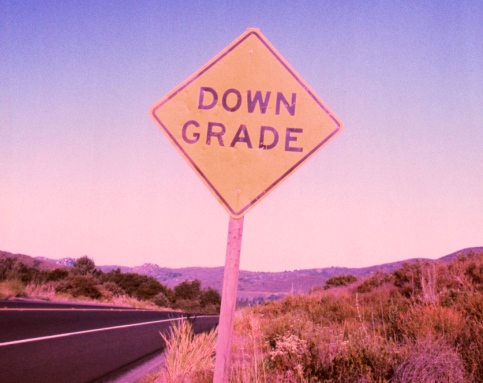It looks like SandRidge Energy Inc. (NYSE: SD) can’t catch any breaks. Analysts and investors alike are not responding well to any of the moves that this company is making. Last week SandRidge was downgraded by Credit Suisse after its earnings and now Standard & Poor’s has decided to downgrade its credit.
In the first quarter SandRidge had an adjusted net loss of less than $0.01 per share on revenue of $215.3 million. At the same time, SandRidge produced 7.9 million barrels of oil equivalent (MMBoe), 50% of which was crude oil and natural gas liquids. First-quarter production averaged 87.7 thousand barrels of oil equivalents per day (MBoep/d). This represents a 1% decrease in average daily production from the full fourth quarter of 2014.
Credit Suisse’s analysts Arun Jayaram and Bryan Baritot had an Underperform rating for SandRidge and a price target of $0.80, implying downside of just over 50% from current prices. Note that this call by Credit Suisse was made on May 7.
The highlight of the first quarter was the significant cash burn, with SandRidge’s net debt balance increasing by an incredible $345 million sequentially in a period when the company benefited from $137 million in cash hedging gains. As a result of the significant cash burn, management signaled that it was “evaluating alternatives to bring our cash generation and debt levels in line.” Credit Suisse suggests that SandRidge might be considering some sort of equity raise or other type of near-term financing.
ALSO READ: 5 Big Oil Stocks to Buy for the Rest of 2015
When Credit Suisse made the call, shares of SandRidge were down about 8% at $1.63, and since that time shares dropped roughly 25% to the most recent closing price of $1.33.
It would appear that Credit Suisse was right in its assumption of SandRidge raising capital. According to the company’s most recent SEC filing:
On May 14, 2015, SandRidge Energy, Inc. (the “Company”) entered into an exchange agreement with an existing holder (the “Holder”) of the Company’s 7.5% Senior Notes due 2021 (the “2021 Notes”) and 8.125% Senior Notes due 2022 (the “2022 Notes”), pursuant to which the Company agreed to issue to the Holder (a) 16,046,666 shares of the Company’s common stock, par value $0.001 per share ( “Common Stock”) in exchange for an aggregate $29,000,000 principal amount of the 2021 Notes and 257,778 additional shares of Common Stock as payment for the interest accrued thereon since the last interest payment date and (b) 11,620,000 shares of Common Stock, par value $0.001 per share, in exchange for an aggregate $21,000,000 principal amount of the 2022 Notes and 107,431 additional shares of Common Stock as payment for the interest accrued thereon since the last interest payment date. The exchange is expected to close May 19, 2015.
Concurrently, SandRidge’s credit rating was downgraded by Standard & Poor’s to CCC+ from B in regards to the debt swap that the company stated in its filing.
ALSO READ: Credit Suisse’s 3 Most Undervalued MLPs to Buy Now
According to Standard & Poor’s:
We note that the exchange reduces the company’s approximately $3.4 billion of debt by $50 million, marginally improving leverage. However, we believe that even if the current exchange does not qualify as distressed under our definition, the deal indicates that, in order to reduce its substantial debt burden, SandRidge might enter into additional exchanges that we would view as distressed. The negative CreditWatch placement reflects the possibility that we would lower ratings if the company’s stock price is below the level required for investors to receive the promised amount on the original securities at the close of the transaction.
On Friday afternoon, SandRidge shares were down about 10% at $1.20. The stock has a 52-week trading range of $1.13 to $7.43.
Get Ready To Retire (Sponsored)
Start by taking a quick retirement quiz from SmartAsset that will match you with up to 3 financial advisors that serve your area and beyond in 5 minutes, or less.
Each advisor has been vetted by SmartAsset and is held to a fiduciary standard to act in your best interests.
Here’s how it works:
1. Answer SmartAsset advisor match quiz
2. Review your pre-screened matches at your leisure. Check out the advisors’ profiles.
3. Speak with advisors at no cost to you. Have an introductory call on the phone or introduction in person and choose whom to work with in the future
Get started right here.
Thank you for reading! Have some feedback for us?
Contact the 24/7 Wall St. editorial team.



